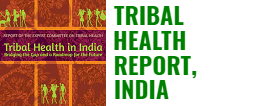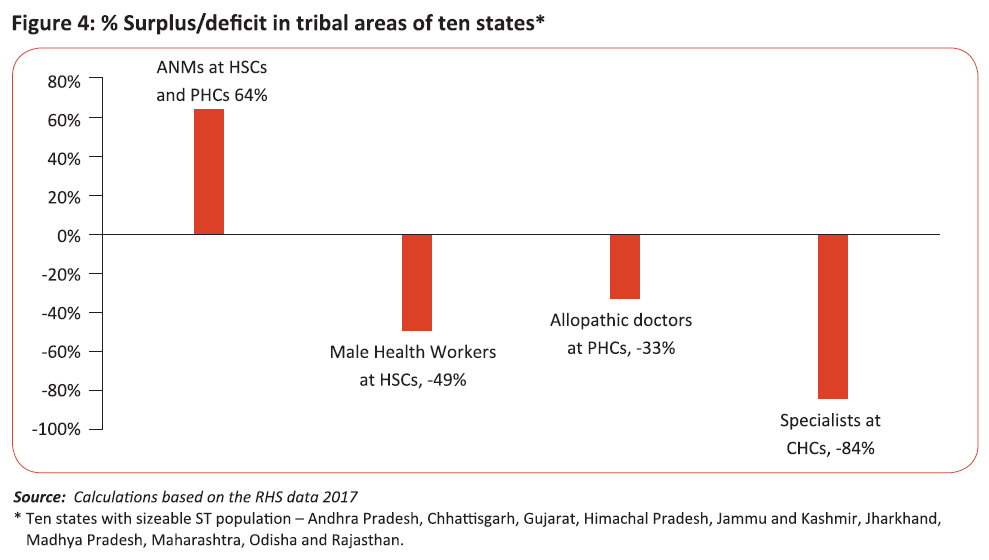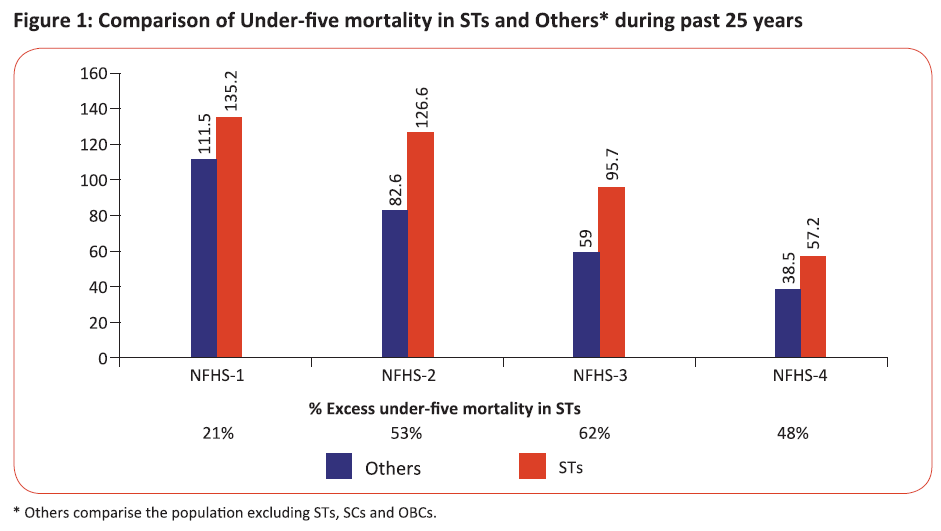- Communicable diseases, maternal and child health problems and malnutrition continue to prevail;
- Non-communicable diseases including mental stress and addiction are rapidly increasing.
- Injuries due to accidents, snake and animal bites and violence in conflict situations;
- Difficult natural conditions arising due to geographic terrain, distances and harsh environments;
- Worse social-economic determinants, especially in education, income, housing, connectivity, water and sanitation.
- Poor quality and inappropriate health care services with low access and coverage, low outputs and outcomes;
- Severe constraints in health human resource at all levels; the professionals from outside are unwilling to serve in tribal areas, and the local potential human resource is not trained and utilized by the health system.
- The legitimate and needed financial share for tribal health is not allocated or used in most of the states. There is lack of transparent accounting of the actual expenditure on tribal health.
- Lack of data, monitoring and evaluation that masks all the above-mentioned problems;
- Political disempowerment of tribal people– from the individual to the national level - that exacerbates these problems. There is little inclusion of tribal people in the planning, priority setting and in execution.



